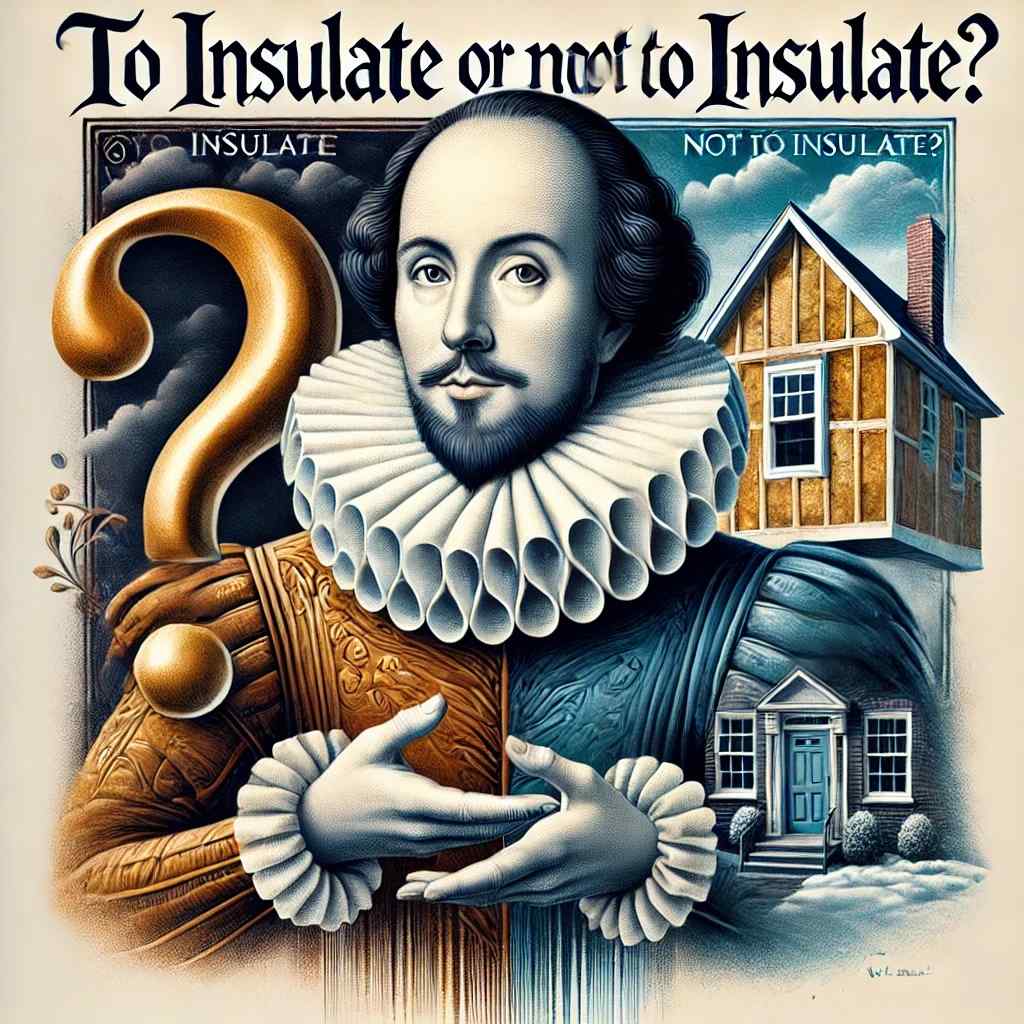To Insulate or Not to Insulate? That’s the Question
When considering insulation for your home, metal building, or commercial space, you might find yourself pondering Shakespearean-style: To insulate or not to insulate? The answer is clear—insulation is an essential component of energy efficiency, comfort, and long-term cost savings. But not all insulation is created equal. In this guide, we’ll explore the general benefits of insulation, its best use
Why Insulation is Non-Negotiable
Insulation is one of the smartest investments you can make for any structure. Here’s why:
1. Energy Efficiency & Cost Savings
Proper insulation reduces heat transfer, keeping your building warmer in the winter and cooler in the summer. This minimizes your heating and cooling costs, often leading to 30-50% energy savings over time.
2. Improved Comfort
Insulated spaces maintain more stable indoor temperatures, preventing extreme fluctuations. This is especially beneficial in regions with harsh climates, ensuring your home or building remains comfortable year-round.
3. Moisture Control & Mold Prevention
Insulation helps prevent condensation buildup, which can lead to mold, mildew, and structural damage. Reflective insulation is particularly effective in metal buildings, garages, and barns, where moisture issues are common.
4. Noise Reduction
Insulation acts as a sound barrier, reducing noise transmission between rooms or from outside sources. This makes it an excellent choice for homes, offices, and commercial buildings.
5. Environmental Benefits
By reducing energy consumption, insulation helps lower carbon footprints. Some types of insulation, like reflective and fiberglass, are also made from recyclable materials, making them eco-friendly choices.
Best Use Cases for Insulation
Insulation isn’t just for homes—it plays a crucial role in various structures and industries. Here are the best use cases:
1. Residential Homes
- Attics, walls, and crawl spaces benefit from insulation, reducing heating and cooling expenses.
- Garages and sheds stay more comfortable, protecting belongings and improving usability.
2. Metal Buildings & Warehouses
- Reflective insulation is highly effective at preventing radiant heat transfer, keeping metal buildings cooler in summer and warmer in winter.
- It helps reduce condensation, extending the lifespan of the structure.
3. Commercial & Industrial Spaces
- Offices, factories, and retail spaces save on energy costs and improve working conditions.
- Large warehouses benefit from reflective insulation, which doesn’t require thick layers to be effective.
4. Pole Barns, Workshops & Agricultural Structures
- Livestock barns, greenhouses, and storage buildings stay temperature-regulated without excessive energy use.
- Prevents moisture buildup, which can damage machinery and inventory.
5. Retrofitting Older Buildings
- Older structures often lack proper insulation, making reflective insulation a simple and effective upgrade.
- It’s easy to install over existing insulation or as a standalone solution.
Why Reflective Insulation is the Easiest Choice
If you're considering insulation but worry about complex installation or maintenance, reflective insulation (such as Prodex) is the ideal solution. Here’s why:
1. Simple Installation
Unlike fiberglass batts or spray foam, reflective insulation is lightweight and flexible. It can be installed:
- Over existing insulation for added efficiency.
- With minimal tools—no need for special cutting equipment.
- Without professional help, making it a great DIY project.
2. Low Maintenance
- Unlike fiberglass, which can sag over time, reflective insulation maintains its effectiveness without settling or degrading.
- It doesn’t attract pests or hold moisture, reducing the risk of mold and mildew.
3. Best for Retrofitting
- If your home or building lacks insulation, adding reflective insulation is one of the easiest retrofitting solutions.
- It works well in tight spaces, attics, and crawl spaces, where traditional insulation is difficult to install.
4. Works in Any Climate
- In hot climates, it reflects radiant heat, keeping interiors cool.
- In cold climates, it prevents heat loss, improving energy efficiency.
- In humid climates, it combats condensation issues in metal buildings, barns, and garages.
The Final Verdict: To Insulate, or Not to Insulate?
Without a doubt, the answer is YES—insulating your home, building, or workspace improves comfort, reduces energy costs, and protects your structure. And when it comes to ease of installation, maintenance, and retrofitting, reflective insulation stands out as the top choice.
Looking for the best reflective insulation? Shop Prodex at Insulation4Less for high-quality, energy-efficient solutions tailored to your needs.







